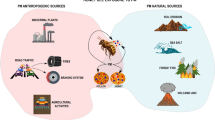Abstract
Since forager honeybees change their food-unloading behavior according to nectar-source profitability, an experiment was performed in order to analyze whether food-receivers modify their within-hive tasks related to different reward conditions. We offered individual foragers two reward conditions at a rate feeder while an additional feeder offered a constant reward and was of free access to the rest of the hive. Both feeders were the only food sources exploited by the colony during the assays since a flight chamber was used. After receiving nectar, hive bees performed processing cycles that involved several behaviors and concluded when they returned to the delivery area to receive a new food sample. During these cycles, receivers mainly performed oral contacts offering food, or inspected cells, and often both. In the latter case, both behaviors occurred simultaneously and at the same distance from the hive entrance. When they performed a single task, either the occurrence of cell inspections increased or contact offerings decreased for the highest reward rate offered to the donor-forager. Receivers also begged for food more often after interacting with low-profit foragers. Thus, the profitability of the food source exploited by nectar-forager honeybees could affect receiver behaviors within the hives based on individual-to-individual interactions.




Similar content being viewed by others
References
Anderson C, Ratnieks FLW (1999) Task partitioning in insect societies. I. Effect of colony size on queuing delay and colony ergonomic efficiency. Am Nat 154:521–535
Cassill D (2003) Rules of supply and demand regulate recruitment to food in an ant society. Behav Ecol Sociobiol 54:441–450
De Marco RJ, Farina WM (2001) Changes in food source profitability affect the trophallactic and dance behavior of forager honeybees (Apis mellifera L.). Behav Ecol Sociobiol 50:441–449
Esch HE, Burns JE (1996) Distance estimation by foraging honeybees. J Exp Biol 199:155–162
Farina WM (1996) Food-exchange by foragers in the hive—a means of communication among honeybees? Behav Ecol Sociobiol 38:59–64
Farina WM, Núñez JA (1991) Trophallaxis in the honeybee Apis mellifera (L.) as related to the profitability of food sources. Anim Behav 42:389–394
Farina WM, Wainselboim AJ (2001a) Changes in the thoracic temperature of honeybees while receiving nectar from foragers collecting at different reward rates. J Exp Biol 204:1653–1658
Farina WM, Wainselboim AJ (2001b) Thermographic recordings show that honeybees receive nectar from foragers even during short trophallactic contacts. Insectes Soc 48:360–362
Frisch K von (1967) The dance language and orientation of bees. Belknap Press of Harvard University Press, Cambridge, Mass
Hart AG, Ratnieks FLW (2001) Why do honeybee (Apis mellifera) foragers transfer nectar to several receivers? Information improvement through multiple sampling in a biological system. Behav Ecol Sociobiol 49:244–250
Hölldobler B, Wilson EO (1990) The ants. Harvard University Press, Cambridge, Mass
Jeanne RL (1986) The evolution of organization of work in social insects. Monit Zool Ital 20:119–133
Kolmes SA (1984) A quantitative comparison of observational methodologies for studies of worker honeybees. J Apic Res 23:189–198
Núñez JA (1966) Quantitative Beziehungen zwischen den eingenschaften von Futterquellen und dem verhalten von sammelbienen. Z Vgl Physiol 53:142–164
Núñez JA (1970) The relationship between sugar flow and foraging and recruiting behavior of honeybees (Apis mellifera L.). Anim Behav 18:527–538
Núñez JA (1974) Metabolism and activity of the worker bee. Proceedings of the 24th Apimondia International Apiarist Congress. Apimondia Ediciones, Buenos Aires
Núñez JA (1982) Honeybee foraging strategies at a food source in relation to its distance from the hive and the rate of sugar flow. J Apic Res 21:139–150
Park W (1925) The storing and ripening of honey by honeybees. J Econ Entomol 18:405–410
Seeley TD (1982) Adaptive significance of the age polyethism schedule in honeybee colonies. Behav Ecol Sociobiol 11:287–293
Seeley TD (1989) Social foraging in honeybee: how nectar foragers assess their colony’s nutritional status. Behav Ecol Sociobiol 24:181–199
Seeley TD (1995) The wisdom of the hive. The social physiology of honeybee colonies. Harvard University Press, Cambridge, Mass
Seeley TD, Kolmes SA (1991) Age polyethism for hive duties in honeybees—illusion or reality? Ethology 87:284–297
Seeley TD, Mikheyev AS, Pagano GJ (2000) Dancing bees tune both duration and rate of waggle-run production in relation to nectar-source profitability. J Comp Physiol A 186:813–819
Stabentheiner A, Hagmüller K (1991) Sweet food means “hot dancing” in honeybees. Naturwissenschaften 78:471–473
Tezze AA, Farina WM (1999) Trophallaxis in the honeybee, Apis mellifera L.: the interaction between viscosity and sucrose concentration of the transferred solution. Anim Behav 57:1319–1326
Vogel S (1983) Ecophysiology of zoophilic pollination. In: Lange OL, Nobel PS, Osmond CB, Ziegier H (eds) Physiological plant ecology. III. Encyclopedia of plant physiology. Springer, Berlin Heidelberg New York, pp 559–624
Waddington KD, Kirchner WH (1992) Acoustical and behavioral correlates of profitability of food source in honey bee round dances. Ethology 92:1–6
Wainselboim AJ, Farina WM (2000) Trophallaxis in the honeybee Apis mellifera (L.): the interaction between flow of solution and sucrose concentration of the exploited food source. Anim Behav 59:1177–1185
Wilson EO (1971) The insect societies. Belknap Press of Harvard University Press, Cambridge, Mass
Zar JH (1996) Biostatistical analysis, 3rd edn. Prentice-Hall, New Jersey
Acknowledgements
We are deeply indebted to J. Goyret and A. Wainselboim for valuable comments on the original manuscript. We thank R. De Marco and R. Josens for fruitful comments and discussion throughout the study. We thank also C. Farny and P. Reissig for helping us with the English. We thank also R. Moritz and two anonymous referees for their valuable comments on the original manuscript. This study was partially supported by funds from ANPCYT (PICT 98-03103), Fundación Antorchas, the University of Buenos Aires and CONICET (PIP 2049). The present study complies with the current laws of the country in which the experiments were performed.
Author information
Authors and Affiliations
Corresponding author
Additional information
Communicated by R.F.A. Moritz
Rights and permissions
About this article
Cite this article
Pírez, N., Farina, W.M. Nectar-receiver behavior in relation to the reward rate experienced by foraging honeybees. Behav Ecol Sociobiol 55, 574–582 (2004). https://doi.org/10.1007/s00265-003-0749-2
Received:
Revised:
Accepted:
Published:
Issue Date:
DOI: https://doi.org/10.1007/s00265-003-0749-2




